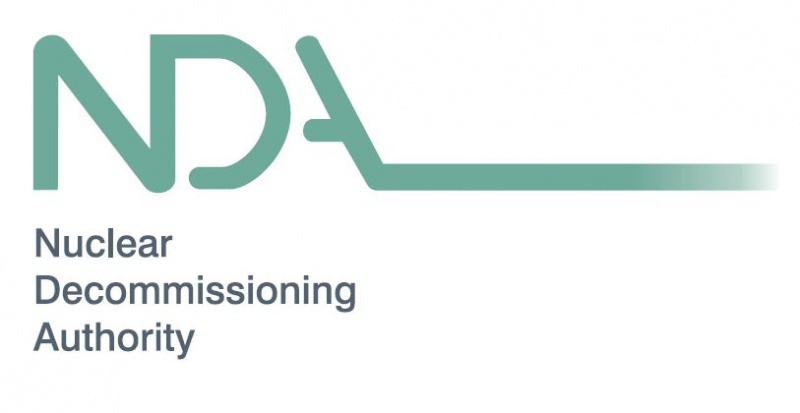
Blog
-
Geiger Readings for July 18, 2016
Ambient office = 90 nanosieverts per hourAmbient outside = 65 nanosieverts per hourSoil exposed to rain water = 53 nanosieverts per hourIceberg lettuce from Central Market = 109 nanosieverts per hourTap water = 97 nanosieverts per hourFiltered water = 88 nanosieverts per hour -
Geiger Readings for July 17, 2016
Ambient office = 89 nanosieverts per hourAmbient outside = 107 nanosieverts per hourSoil exposed to rain water = 111 nanosieverts per hourRomaine lettuce from Central Market = 102 nanosieverts per hourTap water = 108 nanosieverts per hourFiltered water = 100 nanosieverts per hour -
Geiger Readings for July 16, 2016
Ambient office = 88 nanosieverts per hourAmbient outside = 73 nanosieverts per hourSoil exposed to rain water = 72 nanosieverts per hourRedleaf lettuce from Central Market = 118 nanosieverts per hourTap water = 120 nanosieverts per hourFiltered water = 105 nanosieverts per hour -
Radioactive Waste 183 – U.K. Nuclear Decommissing Authority Publishes Estimate For 120 Year Clearup Project
As is the case with all the major nuclear powers, the U.K. has to deal with some sites that have major radioactive pollution left over from their development of nuclear power and nuclear weapons. The U.K. Nuclear Decommissioning Authority (NDA) just published a report in which it announced that the estimated cost of decommissioning old nuclear sites in the U.K. has actually gone down a little bit which is very welcome and very unusual. The cleanup program covers seventeen old sites. The NDA owns the contaminated sites and is responsible for planning the decommissioning work. The actual work will be carried out by Site Licensed Companies under contract to the NDA.
The estimation of costs for the project covers decommissioning and dismantling the reactors, tearing down the buildings, dealing with the disposal of all the wastes and restoration of the land which is referred to as remediation. The proposal also includes costs of continuing to operate new nuclear power plants and the fuel reprocessing facilities at Sellafield. The current estimate for the decommissioning project is one hundred and fifty four billion dollars over the next one hundred and twenty years.
The NDA said that ” Decommissioning many of these facilities will continue well into the 22nd century. Over this timescale, plans and forecasts will be affected by technology improvements, changes in government policy, economic circumstances and environmental issues. The figure is updated annually but should be regarded as an informed estimate that depends on assumptions about future developments and lies within a range of possible figures.”
Currently, the NDA is spending about four billion dollars a year on the decommissioning project. Two thirds of this cost is borne by the U.K. government and the other third is covered by revenues from NDA commercial contracts for managing and reprocessing spent nuclear fuel.
The NDA admits that there are many uncertainties about future costs for decommissioning. While the work requirements and technologies are well known for some sites, there are other sites where it is very difficult to accurately assess what the costs of cleanup might be.
As a matter of fact, I would say that such uncertainties render any estimate of the cost of a hundred and twenty year project involving unspecified problems and non-existent future technologies a shot in the dark at best. In light of these problems, the NDA has published a range of estimates that vary from one hundred and twenty five billion dollars to two hundred and ninety billion dollars which puts their preferred estimate of one hundred and fifty four billion at the low end of the range of estimates.
In addition to the obvious issues of unknown problems that may arise at particular sites and the fact that some new technologies will have to be developed, there are broader problems regarding politics and economics. The estimation of decommissioning costs rests on the assumption that current political institutions will continue to exist and that the current economic system will also continue. If there are major disruptions caused by social instability, war, economic collapse, environmental collapse or totally unforeseen problems, then the necessary political institutions and economic resources may not exist for the one hundred and twenty years required to carry out the NDA plan for decommissioning. In a worst case scenario, total social collapse might leave radioactively contaminated sites unprotected to endanger the ecosystem and public health.
-
Geiger Readings for July 15, 2016
Ambient office = 111 nanosieverts per hourAmbient outside = 114 nanosieverts per hourSoil exposed to rain water = 113 nanosieverts per hourCrimini mushroom from Central Market = 74 nanosieverts per hourTap water = 118 nanosieverts per hourFiltered water = 109 nanosieverts per hour -
Nuclear Weapons 211 – The Russians Are Working On A Combination Air and Space Hypersonic Strategic Bomber
As I have blogged before, nuclear tensions are rising between Russia, NATO and the U.S. There are nuclear non-proliferation and weapons reduction treaties in effect between the major nuclear powers but both the U.S. and Russia are upgrading their nuclear arsenals with charges flying around that they are violating the terms of the treaties.
The U.S. Air Force is developing the Air Force’s X-37B robotic mini-shuttle. It is about a quarter of the size of the Space Shuttle. The X-37B is launched on top of a rocket and is intended for extended missions in space. The Russians have charged that the X-37B could be adapted to carry a nuclear weapon into orbit. The Russians claim that this would be an obvious violation of the 1967 Outer Space Treaty which explicitly prohibits the signatories, including the U.S. and Russia, from putting weapons in space vehicles.
The Russian Strategic Missile Forces Academy is developing a new hypersonic air/space vehicle that will be similar to the U.S. Air Force’s X-37B robotic mini-shuttle. But, unlike the X-37B, the new Russian vehicle is being openly designed to be a strategic bomber capable of carrying nuclear warheads.
The development of the new Russian bomber is definitely a violation of the Outer Space Treaty and some say that it is hypocritical, given that Russia accused the U.S. of such a violation with the development of the X-37B, but the Russian would probably say that it was just prudent given the U.S. work on the X-37B. The U.S. response to the new Russian bomber could well be the development of its own hypersonic strategic nuclear bomber. It appears that the world is entering a new dangerous arms race to place nuclear weapons in space.
The Central Aero-Hydrodynamic Institute will do the actual engineering for the Russian space plane. The weight of the craft will be about twenty five tons. (The weight of the X-37B is about five tons.) The first flights of the new aircraft are planned for 2020. The new bomber will be able to fly in atmosphere and in space. It will be propelled by conventional turbofan engines as well as rocket engines. Both manned versions and unmanned versions are planned.
The engine will have to be what is called a combination-cycle engine. Such engines combine the efficiency of a air-breathing turbofan engine with independent self contained rocket engines. The U.S. has been trying to develop such combination-cycle engines for decades without producing a practical working version. It is believed that the Russians have no such engines despite claims by the Russians that they have mastered the technology required to alternate between airbreathing in atmosphere and rocket propulsion in space.
The new bomber will take off from conventional airfields. It will patrol airspaces like a conventional airplane but when order to do so it will be able to ascend to the edge of space to launch nuclear warheads against targets on the ground. It will be able to reach any target on Earth within two hours.
Logo of the Central Aero-Hydrodynamic Institute:





